PLM Software Market Size
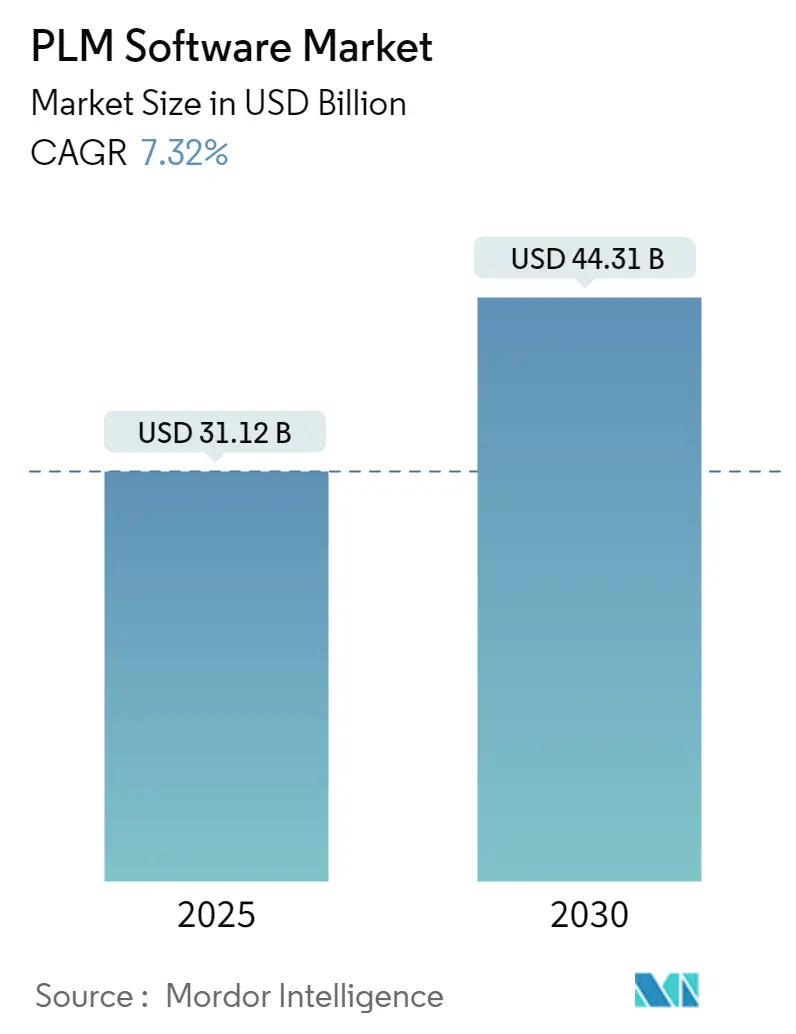
| Study Period | 2019 - 2030 |
| Market Size (2025) | USD 31.12 Billion |
| Market Size (2030) | USD 44.31 Billion |
| CAGR (2025 - 2030) | 7.32 % |
| Fastest Growing Market | Asia Pacific |
| Largest Market | North America |
| Market Concentration | Low |
Major Players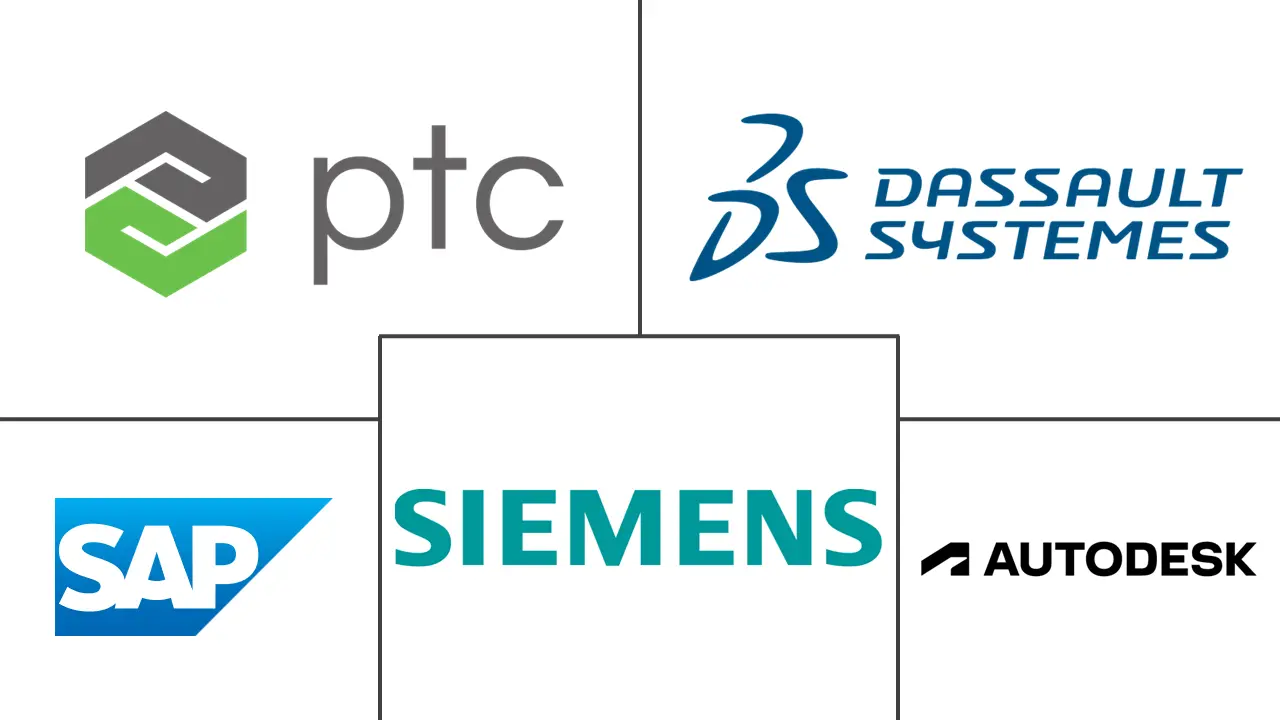
*Disclaimer: Major Players sorted in no particular order |
PLM Software Market Analysis
The PLM Software Market size is estimated at USD 31.12 billion in 2025, and is expected to reach USD 44.31 billion by 2030, at a CAGR of 7.32% during the forecast period (2025-2030).
The market is expected to grow owing to the rising demand for robust data analytics software platforms in the industry. Moreover, the increasing adoption of IoT across the manufacturing industry has augmented these trends. PTC's Windchill is an instance of the PLM software embedded with analytics for discrete manufacturers looking for IoT capabilities. This software can boost the PLM solution to sprint with flexibility.
- Companies across industries are increasingly focused on streamlining their product development processes to improve efficiency and accelerate innovation. PLM software enables organizations to manage the entire product lifestyle, from ideation to disposal and efficiency, thereby increasing the demand in the market.
- With businesses operating on a global scale and teams dispersed across various locations, there is a growing need for collaboration tools that facilitate communication and data sharing. PLM software provides a centralized platform for teams to collaborate seamlessly regardless of geographic location.
- The increased adoption of Industrial IoT (IIoT) in the production process is aiding the market demand for software applications, and IIoT adoption is expected to skyrocket during the forecast period. For instance, according to GSMA Intelligence, the number of IIoT-connected objects is expected to reach 13.7 billion by 2025.
- However, as the companies continue to provide different products and product ranges to tackle market competitiveness, it creates interoperability issues, a matter of constant optimization for the software companies. As continuous improvements continue in the software products, the software implementation in a company's existing product line-up becomes streamlined and manageable, facilitating better results.
- Many manufacturing industries were affected by the COVID-19 pandemic, creating significant supply chain gaps and leading to delays. This forced many industries to hasten the adoption of Industry 4.0 and digital transformation initiatives, boosting the demand for PLM software to bolster the required growth rates. The increased software penetration after the pandemic has boosted market growth.
PLM Software Market Trends
Increasing Production of Autonomous Vehicles to Drive Market Growth
- As the use of autonomous vehicles becomes more widespread, the developers working on these vehicles are encountering increasingly complex challenges. To overcome these challenges, they need to re-evaluate their existing processes and toolsets. This has led to a rising demand for solutions that can help them overcome these challenges, which is fueling the market's growth exponentially.
- Moreover, the fully functional autonomous driving systems need some of the most complex and sophisticated software implementations that carmakers have ever faced for combining a variety of data feeds, like information from sensors, traffic data from the cloud, data coming from other infrastructure or vehicles, and tying it all into the automobiles's mechanical and electronic components to create a vast network of onboard systems that all work together reliably without the need for user input or correction.
- Furthermore, integrated ALM (application lifecycle management) and product development platforms, such as codeBeamer ALM, will play a significant role in modernizing development processes to overcome the challenges posed by the growing complexity of products and the increasing dependence on sophisticated software applications in the autonomous vehicle sector.
- The rising usage of digital manufacturing and the increasing demand for autonomous cars are key trends that are expected to drive the PLM software market in the automotive sector during the forecast period.
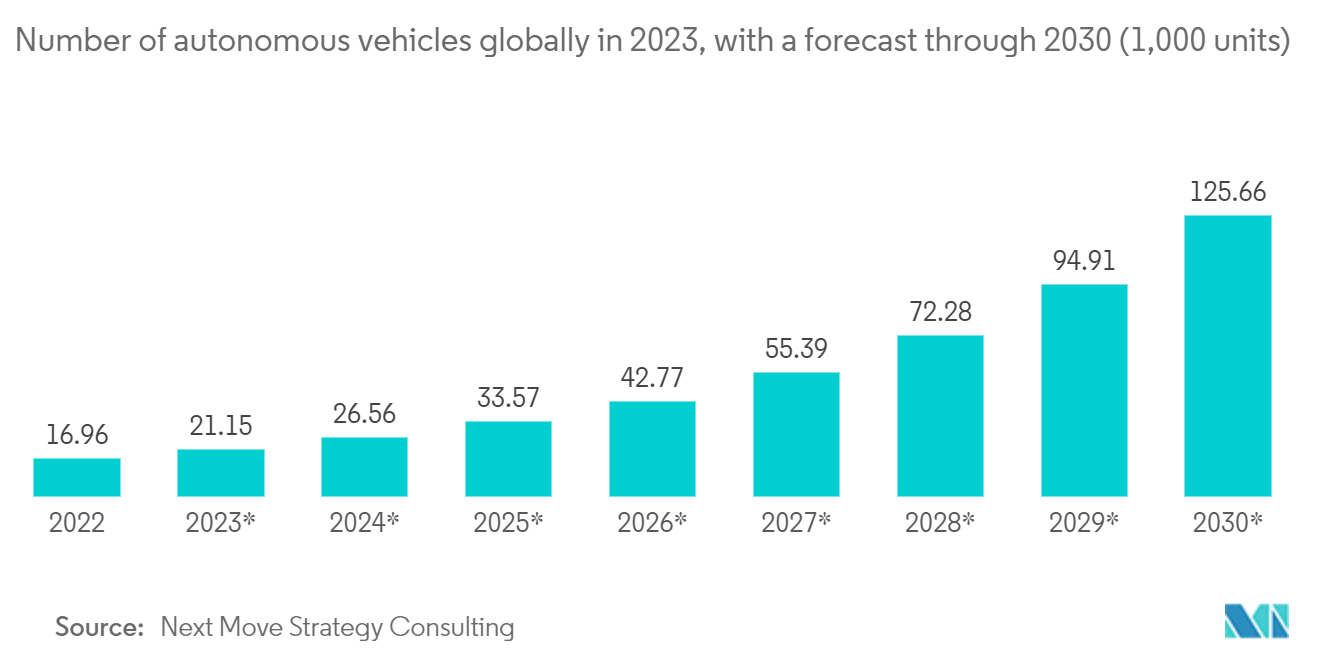
North America to Account for a Significant Share
- North America's strong financial position allows it to invest massively, especially in advanced technologies and solutions that have offered a strong competitive edge within the market. Moreover, the region has a robust presence of several significant product lifecycle management software vendors like IBM Corp., PTC Inc., and Oracle Corporation. Hence, there lies intense competition among the market players.
- The entire automotive industry in North America is growing at a rapid pace. PLM software is primarily utilized in the product development stage, which starts long before manufacturing begins in the automotive industry. It ensures the vehicles' advanced safety features, electronics, and embedded software content. Hence, with the rise in the automotive industry within the region, the market is expected to have various lucrative growth opportunities throughout the forecast period.
- Other manufacturing industries and markets explore the benefits of deploying PLM software to augment manufacturing and production processes. For instance, in April 2023, Siemens and Microsoft harnessed the overall collaborative power of generative artificial intelligence mainly to help industrial companies drive efficiency and innovation across the engineering, design, manufacturing, and operational lifecycle of the products. Also, to enhance cross-functional collaboration, the companies are focused on integrating Siemens' Teamcenter software for product lifecycle management with Microsoft's collaboration platform, Teams, and its language models in Azure OpenAI Service, as well as various other Azure AI capabilities.
- For instance, PTC declared the availability of the Onshape-Arena Connection, a new functionality that mainly connected its cloud-native Onshape product development and Arena product lifecycle management solutions. The connection allowed the product data to be shared instantly between the Arena and Onshape solutions with the single click of a button, assisting the companies in augmenting the product development process and simplifying collaboration with the supply chain partners.
- Such collaborations enhance the entire market scenario, stimulating other competitors and vendors to enable PLM software and shaping the whole North American market for vast PLM implementation. Hence, the in-depth implementation throughout several aspects of the product supply chain is actively helping North American businesses with the evolving Industry 4.0 trends.
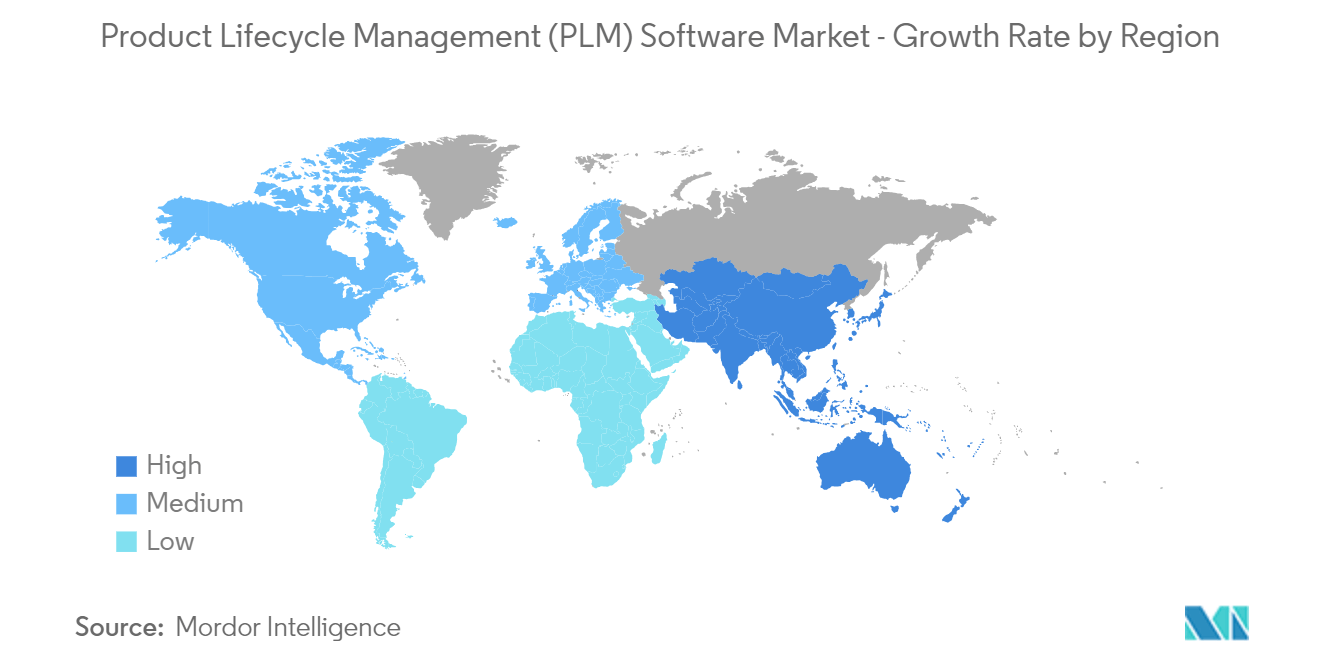
PLM Software Market Industry Overview
The product lifecycle management (PLM) software market is highly fragmented and competitive, mainly due to the presence of numerous global players. Various market players are moving in R&D with the latest software techniques, building a high level of competitiveness throughout the market. The key players include Dassault Systemes Deutschland GmbH, Siemens, Autodesk Inc., ANSYS Inc., and Infor Inc. The companies are thus maximizing their market share by forming various partnerships, investing in projects, and introducing new products in the market.
- In February 2023, global provider of collaboration and design solutions Bricsys, part of Hexagon, declared its partnership with MechWorks, part of ITI Technegroup, a WIPRO company, to offer an integration between Siemens' Teamcenter software and BricsCAD. The solution primarily provides industry-best features to connect BricsCAD's processes faster and enable designers to focus on its product development.
- In October 2023, PTC, a leading engineering software and PLM provider, announced its acquisition of pure-systems, a German software company that specializes in product and software variant management. The acquisition had already taken place, as indicated by the disclaimer on pure-systems’ website. The acquisition will bring pure::variants, a tool designed to help engineers and product designers manage product and software variation, to PTC’s portfolio. PTC and pure-systems had previously partnered to integrate pure::variants into PTC’s Codebeamer application lifecycle management (ALM) software.
PLM Software Market Leaders
-
Siemens AG
-
SAP SE
-
Autodesk Inc.
-
Dassault Systems Deutschland GmbH
-
PTC Inc.
*Disclaimer: Major Players sorted in no particular order
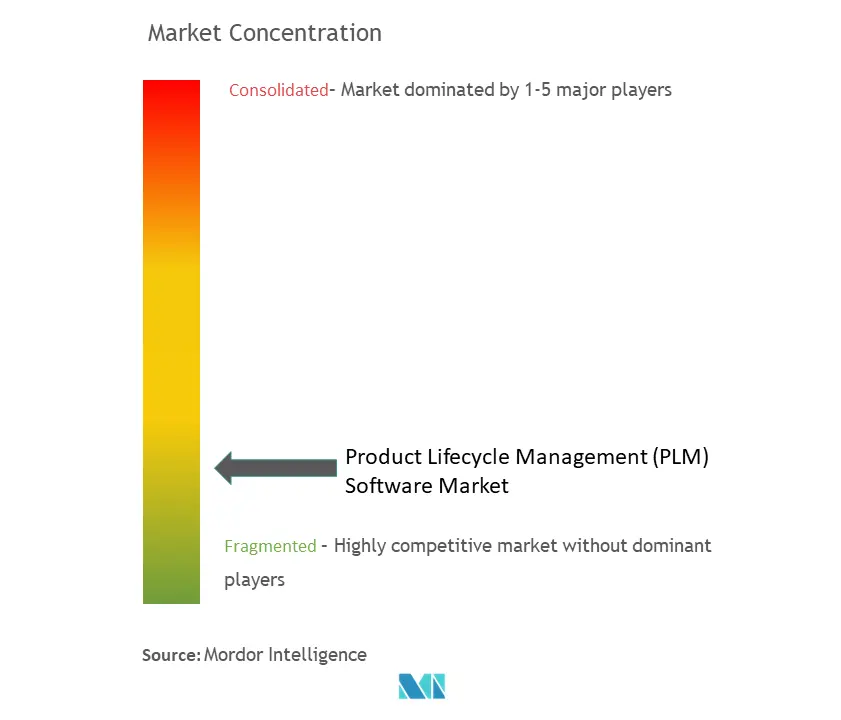
PLM Software Market News
- October 2023: PTC, a software provider, announced the acquisition of Pure-Systems. This acquisition boosted PTC's application lifecycle management portfolio. This was the fourth acquisition made by PTC in the last 18 months, and the company spent a total of approximately USD 1.8 billion on acquisitions. One of the significant acquisitions was the purchase of ServiceMax, which specializes in cloud-native field service management software, for a whopping USD 1.46 billion in November. In addition, PTC also purchased Intland Software, an application lifecycle management provider, for USD 280 million last year.
- September 2023: Centric Software®, the market leader in product lifecycle management (PLM), announced that it would partner with global discount retailer ALDI SOUTH to support its digital transformation. The partnership will focus on enhancing international collaboration and enabling data-driven decision-making. Centric Software provides innovative enterprise solutions for planning, designing, developing, sourcing, pricing, and selling products to achieve strategic and operational digital transformation goals. This partnership is expected to benefit ALDI SOUTH by leveraging Centric Software's expertise and solutions to drive growth and improve operational efficiency.
PLM Software Market Report - Table of Contents
1. INTRODUCTION
1.1 Study Assumption and Market Definition
1.2 Scope of the Study
2. RESEARCH METHODOLOGY
3. EXECUTIVE SUMMARY
4. MARKET INSIGHTS
4.1 Market Overview
4.2 Industry Attractiveness - Porter's Five Forces Analysis
4.2.1 Bargaining Power of Suppliers
4.2.2 Bargaining Power of Consumers
4.2.3 Threat of New Entrants
4.2.4 Threat of Substitutes
4.2.5 Intensity of Competitive Rivalry
4.3 Impact of COVID-19 on the Product Lifecycle Management Software Market
5. MARKET DYNAMICS
5.1 Market Drivers
5.1.1 Adoption of Digitalization to Improve Production
5.1.2 Introduction of Cloud Technology to Consolidate the Information
5.2 Market Restraints
5.2.1 Lack of Interoperability among Dissimilar Product Versions
6. MARKET SEGMENTATION
6.1 By Deployment Type
6.1.1 On-premise
6.1.2 Cloud
6.1.3 Professional Services
6.2 By End-user Industry
6.2.1 Electronics, Industrial Equipment, and High-tech
6.2.2 Aerospace and Defense
6.2.3 Automotive
6.2.4 Architecture, Engineering, and Construction (AEC)
6.2.5 Other End-user Industries
6.3 By Geography
6.3.1 North America
6.3.1.1 United States
6.3.1.2 Canada
6.3.2 Europe
6.3.2.1 United Kingdom
6.3.2.2 Germany
6.3.2.3 France
6.3.2.4 Rest of Europe
6.3.3 Asia Pacific
6.3.3.1 India
6.3.3.2 China
6.3.3.3 Japan
6.3.3.4 Rest of Asia-Pacific
6.3.4 Latin America
6.3.5 Middle East and Africa
7. COMPETITIVE LANDSCAPE
7.1 Company Profiles
7.1.1 Siemens AG
7.1.2 Dassault Systems Deutschland GmbH
7.1.3 Autodesk Inc.
7.1.4 PTC Inc.
7.1.5 SAP SE
7.1.6 ANSYS Germany GmbH
7.1.7 Oracle Corporation
7.1.8 Aras Corporation
7.1.9 Arena Solutions
7.1.10 Infor Inc.
- *List Not Exhaustive
8. INVESTMENT ANALYSIS
9. FUTURE OF THE MARKET
PLM Software Industry Segmentation
PLM software refers to a solution that helps manage all the information and processes involved in the lifecycle of a product or service across global supply chains. This includes data related to items, parts, products, documents, requirements, engineering change orders, and quality workflows. The product lifecycle management (PLM) software market for the study defines revenues generated from adopting the different types of PLM software in various end-user industries, such as electronics, industrial equipment, automotive, aerospace, and defense. The analysis is mainly based on the market insights captured through various secondary research and the primaries. The market also covers the major factors impacting the growth of the PLM software market in terms of drivers and restraints.
The product lifecycle management (PLM) software market is segmented by deployment type (on-premise, cloud, and professional services), end-user industry (electronics, industrial equipment, high-tech, aerospace and defense, automotive, architecture, engineering, and construction [AEC]), and geography (North America, Europe, Asia-Pacific, Latin America, and Middle East and Africa). The market sizes and forecasts are provided in terms of value (USD) for all the above segments.
| By Deployment Type | |
| On-premise | |
| Cloud | |
| Professional Services |
| By End-user Industry | |
| Electronics, Industrial Equipment, and High-tech | |
| Aerospace and Defense | |
| Automotive | |
| Architecture, Engineering, and Construction (AEC) | |
| Other End-user Industries |
| By Geography | ||||||
| ||||||
| ||||||
| ||||||
| Latin America | ||||||
| Middle East and Africa |
PLM Software Market Research Faqs
How big is the PLM Software Market?
The PLM Software Market size is expected to reach USD 31.12 billion in 2025 and grow at a CAGR of 7.32% to reach USD 44.31 billion by 2030.
What is the current PLM Software Market size?
In 2025, the PLM Software Market size is expected to reach USD 31.12 billion.
Who are the key players in PLM Software Market?
Siemens AG, SAP SE, Autodesk Inc., Dassault Systems Deutschland GmbH and PTC Inc. are the major companies operating in the PLM Software Market.
Which is the fastest growing region in PLM Software Market?
Asia Pacific is estimated to grow at the highest CAGR over the forecast period (2025-2030).
Which region has the biggest share in PLM Software Market?
In 2025, the North America accounts for the largest market share in PLM Software Market.
What years does this PLM Software Market cover, and what was the market size in 2024?
In 2024, the PLM Software Market size was estimated at USD 28.84 billion. The report covers the PLM Software Market historical market size for years: 2019, 2020, 2021, 2022, 2023 and 2024. The report also forecasts the PLM Software Market size for years: 2025, 2026, 2027, 2028, 2029 and 2030.
PLM Software Industry Report
The United States Senior Living market is experiencing robust growth, driven by an aging population and evolving preferences among older adults. The industry trends indicate a significant demand for various types of senior care, including independent living, assisted living, memory care, and skilled nursing. Each segment caters to different levels of need among seniors, as reflected in comprehensive market research statistics.
Independent living communities are favored by active seniors seeking minimal assistance in a vibrant community setting. Assisted living facilities cater to those requiring daily support. Memory care units are dedicated to caring for individuals with dementia or Alzheimer's disease, while skilled nursing facilities provide extensive medical care and rehabilitation services. The market size for these segments continues to expand, driven by the increasing senior population.
The senior housing market is also witnessing a shift towards wellness-oriented communities that offer holistic services to enhance seniors' quality of life. Market forecast and market research indicate that this trend will continue to shape the industry outlook, with providers continuously innovating and expanding their service offerings to meet the diverse needs of the aging population.
Regional analysis shows varied growth, with some areas displaying higher demand and occupancy rates. Industry statistics reveal that the senior living industry remains highly competitive, with market leaders striving to maintain their positions through strategic initiatives and enhanced service offerings.
For a detailed market forecast and historical overview, download a free report PDF sample from Mordor Intelligence™ Industry Reports. This report provides valuable market data and insights into market segmentation, market value, and market predictions. The industry reports also offer an in-depth industry analysis, industry information, and industry research, making it an essential resource for understanding the market trends and market review.
The market growth is supported by a comprehensive industry overview and market outlook, highlighting the key drivers and challenges facing the industry. The report example and report pdf provide detailed industry reports and research companies' insights, making it a crucial tool for stakeholders looking to navigate the evolving landscape of the United States Senior Living market.



